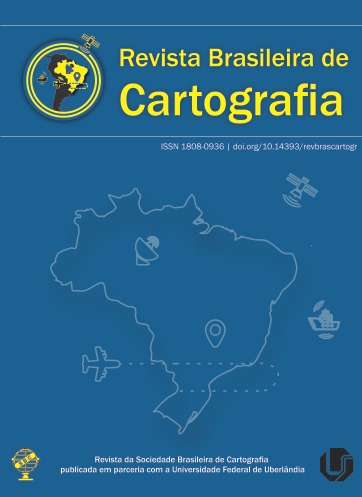Modelagem de Regressão Espacial para Estimativa de Valores em Massa a partir de Cartografia Cadastral
Conteúdo do artigo principal
Resumo
Esta pesquisa propôs a construção e avaliação do desempenho de modelos de regressão linear múltipla (convencional e espacial) para a cidade de Itororó (BA) e assim possibilitar elaboração de uma Planta de Valores Genéricos (PVG) e estimativa do Imposto sobre a Propriedade Predial Urbana (IPTU). Para tanto, o processo de elaboração desses modelos compreendeu mapeamento aerofotogramétrico e cadastro imobiliário, análises espaciais, de multicolinearidade, normalidade e homocedasticidade dos resíduos, além de testes dependência espacial de acordo com a NBR 14.653-2/2011. Os resultados indicaram que a incorporação dos efeitos da autocorrelação espacial através do modelo de defasagem espacial reduzido proporcionou melhor desempenho em relação ao convencional. No entanto a construção do modelo de regressão geograficamente ponderada também reduzido, capaz de modelar a heterogeneidade espacial, mostrou-se ainda mais adequado, propiciando a quase totalidade da explicação da variação dos valores preditos, além de redução brusca dos erros de predição e do coeficiente de dispersão. A extrapolação desse modelo proporcionou a elaboração da PVG e simulação do IPTU. Assim, o incremento na alíquota de 1% proporcionaria considerável participação da arrecadação interna para a receita municipal.
Downloads
Detalhes do artigo
Seção

Este trabalho está licenciado sob uma licença Creative Commons Attribution 4.0 International License.
Autores que publicam nesta revista concordam com os seguintes termos:
- Autores mantém os direitos autorais e concedem à revista o direito de primeira publicação, com o trabalho simultaneamente licenciado sob a Licença Creative Commons Atribuição que permite o compartilhamento do trabalho com reconhecimento da autoria e publicação inicial nesta revista.
- Autores têm autorização para assumir contratos adicionais separadamente, para distribuição não-exclusiva da versão do trabalho publicada nesta revista (ex.: publicar em repositório institucional ou como capítulo de livro), com reconhecimento de autoria e publicação inicial nesta revista.
- Autores têm permissão e são estimulados a publicar e distribuir seu trabalho online (ex.: em repositórios institucionais ou na sua página pessoal) a qualquer ponto antes ou durante o processo editorial, já que isso pode gerar alterações produtivas, bem como aumentar o impacto e a citação do trabalho publicado (veja "O Efeito do Acesso Aberto").





